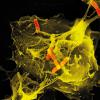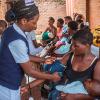How do we predict outbreaks of viruses and infectious diseases and what measures are taken at present to stop them spreading?
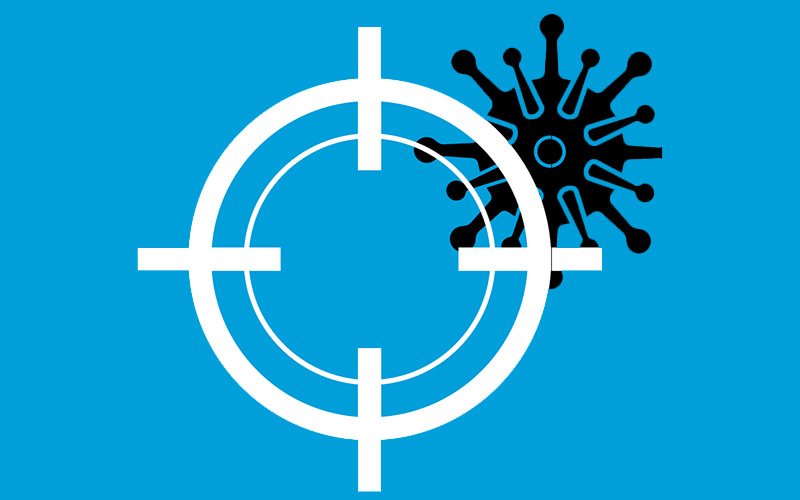
Public Health England (PHE) started using whole genomic sequencing (WGS) to identify different strains of tuberculosis in March this year – the first time it has been used to diagnose and manage an infectious disease.
WGS can precisely identify a particular virus or infection in an individual, chart the evolution of the organism and compare it with the organism present in another person, enabling researchers to establish links between different people carrying the virus or infection and different geographical regions.
Previously, it could take up to a month to confirm a diagnosis of TB, confirm the treatment choices and detect spread between cases. WGS enables the process to take just over a week, slowing down the spread of the disease and reducing the possibility of antimicrobial resistance.
“The use of WGS to diagnose, detect drug resistance and very accurately type TB is a world first for any disease
on this scale,” says Professor Derrick Crook, Director of the National Infection Service at PHE. “We are now able to use cutting-edge science to effectively treat these patients with the right medicines quickly. This approach will also increasingly be used for many other infectious diseases.”
While small predictions can be made based on what is known about viruses and infections, predicting where and when outbreaks will happen is a completely different proposition.
“Determining when an outbreak may occur remains unpredictable, but this is a really exciting time to be working in the field of infectious diseases,” says Professor Nick Phin, Deputy Director of the National Infection Service.
“Modelling and technological advances, such as genome sequencing, can give important insights into organism evolution and how they may affect people, or emerge as new threats.”
Surveillance
PHE currently has in place a variety of systems of surveillance for virus and infectious disease outbreaks – typically two or three different types tailored to what is known about the organism.
As a seasonal virus, winter flu is monitored for two reasons: to warn the government, NHS and individuals when the season starts and ends, so emergency planning can be undertaken; and to understand the changing nature of the virus, how severe and intense the strain is, and which age groups or regions are being affected, to enable targeted vaccination.
This is achieved through a variety of mechanisms. PHE undertakes surveillance of primary care in the NHS, collecting data from hospitals for laboratory testing, taking positive rapid flu tests from a sample of GP surgeries across the country and virological monitoring of any antiviral resistance.
This will affect clinical management – if there is significant drift, antivirals can be used sooner.
A similar approach is taken to viruses and infections that are not seasonal, such as sexually transmitted infections. Isolates from diseases such as gonorrhoea are tested for antimicrobial resistance, and data and test results are shared.
Monitoring the outbreak and spread of viruses and infections in England typically involve PHE working with other public organisations, including local authorities and NHS trusts.
The same applies to viruses and infections that spread internationally. In response to outbreaks of avian flu, PHE has teamed up with the Department for Environment, Food and Rural Affairs, and the Animal and Plant Health Agency, to pool information about the types of flu circulating in birds and animals and assess the potential impact on humans.
Similarly, for the Zika virus, PHE relies on notifications from the World Health Organization and reports from other countries to establish any potential new activity that could have an impact on the UK.
By monitoring the emergence of new infections across South America, and the international spread of the virus, PHE predicted that high levels of activity of the virus among the naïve populations would lead to the development of immunity and ultimately result in a general reduction in activity.
As of 24 May 2017, 299 travel-associated cases of the Zika virus have been diagnosed in the UK, and diagnoses in Brazil have dramatically reduced.
Problem solving
Zika is a classic example of a virus for which there are no antivirals or vaccine developed yet for treatment. The authorities rely on a traditional public health approach of identifying cases, early intervention in terms of isolation or treatment, preventing secondary and tertiary cases, and warning the public about the generic measures they can take take (avoid being bitten by mosquitoes, avoid travel to affected areas).
Conditions such as winter flu, which have a vaccine, are reliant on targeting those most at risk and most in need of vaccinating, such as the elderly, pregnant women and children. But others, such as meningococcal disease, will be treated with antibiotic prophylaxis in the hope of both eliminating the condition in the individual and preventing it from spreading to others.
Ongoing improvement of approaches to monitoring and tackling virus and infection outbreaks is crucial, and PHE’s “Lessons Learned” programme involves auditing its practices and reviewing any outbreak or incident and identifying how things could be done differently for a better outcome, and whether a change of practices is required to reflect this.
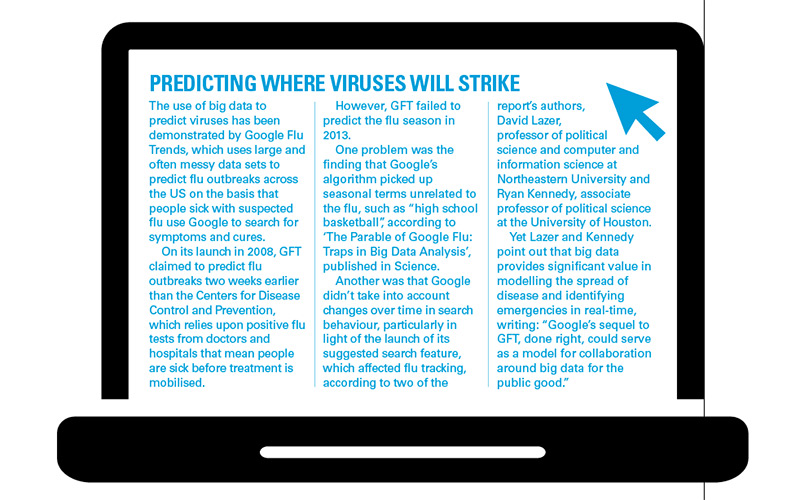
Technology to predict
The growth in technologies to help predict where viruses and infections may strike can aide surveillance and treatment, particularly when the traditional surveillance techniques are more expensive and time-consuming.
Google Flu Trends (see panel) was one of the first web-based tools to be used for real-time surveillance, and works on the basis that the number of people searching for flu-related keywords correlates to the number of people with flu symptoms. These tools tend to be more effective when applied to moderate- to high-prevalence diseases in developed countries with many web users, according to Eirini Christaki in her paper “New technologies in predicting, preventing and controlling emerging infectious diseases”, published in Virulence.
She highlights how advances in computer science have enabled the possibility of simulation of epidemics, through agent-based models (using detailed data for each individual in the population to describe the epidemic) and spatially structured meta-population models (using geographic census data along with inter-population mobility patterns to study disease dynamics and predict spread).
Remote sensing technology, such as satellite imaging, can also be used to monitor environmental changes that may predict epidemics: for example, monitoring sea temperature and height to accurately predict the incidence of a cholera outbreak in Bangladesh, which is outlined in the paper “Using satellite images of environmental changes to predict infectious disease outb=reaks”, published in the US journal Emerging Infectious Diseases.
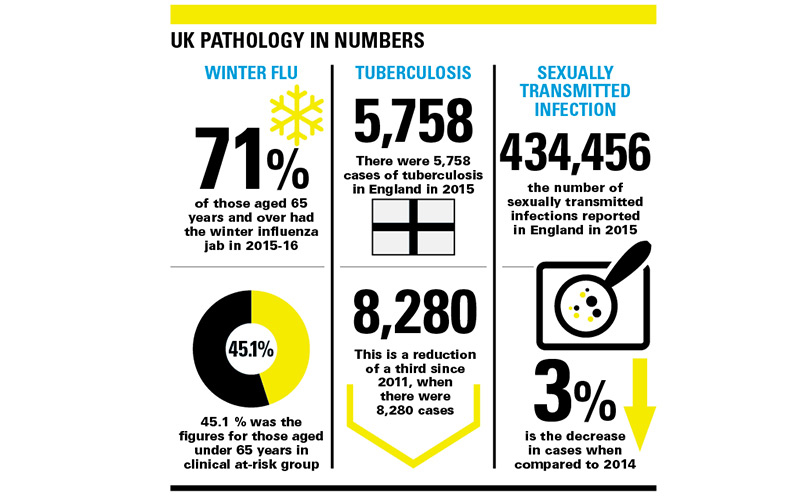
The future
The advancement of sequencing methods – as seen by the use of WGS to identify different strains of tuberculosis – has also affected the prediction of infectious diseases. The use of pathogen genome data has come at the same time as a shift from diagnosing and discovering pathogens in humans and animals to screening for pathogens in samples collected from hotspots. “With better information gathering and sequencing diagnostics, there is much more data available from outbreaks that allows us to answer questions around source and transmission that would not have been answered 10 or 15 years ago,” Phin says.
“This enables us to better protect the public from the health threats that outbreaks can pose and improves the way we contain them and respond.”

